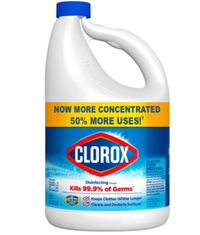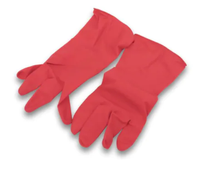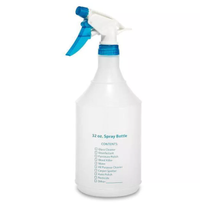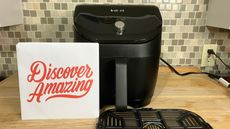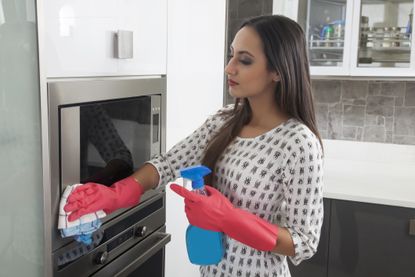

Disinfecting our homes is high on the list of ways we can help stop the spread of germs and viruses. Whether you're worried about Covid-19, or someone in your family is sick with a stomach bug, you're going to want to give you home a good cleaning to ensure other members of your household don't get sick.
The Centers for Disease Control and Prevention lists a few key ingredients that will kill most common viruses and bacteria like Salmonella, Influenza, and Covid-19. The good news? You likely already have one of these potential cleaners in your home.
According to the CDC, we can use diluted household bleach solutions to easily disinfect, if appropriate for the surface (note, hard non-porous surfaces are the best candidates for bleach-based cleaning solutions). Typically, most high-touch surfaces in your home, like doorknobs, light switches, bathtubs, cabinet pulls, and countertops (so long as they're not a natural material like marble or granite) can withstand a bleach-based spray. You'll want to avoid using it on textiles.
So how do you make this easy disinfectant spray? We've listed out the CDC's how-to, below.
How to make a CDC-approved disinfectant with bleach
Clorox Disinfecting Bleach, Concentrated Formula | $6.25 at Walmart
Buying bleach online can be tough right now, but we did manage to find this bottle in stock for shipping at Walmart (even two-day shipping in some areas) as of April 24.
To make an effective bleach solution, you'll need to mix a third of a cup of bleach per gallon of water, or four teaspoons bleach per quart of water. Spray on, and keep the surface wet for 10 minutes to ensure germs are killed, and then wipe down as normal.
You should also follow the manufacturer instructions, keep your space ventilated and not mix in anything other than water with your bleach. To be on the safe side, you should consider mixing your solution in a clean, new spray bottle, then clearly label its contents. We've found some purpose-made bottles below.
Also note: never mix bleach with ammonia or vinegar. It creates a toxic gas.
Join our newsletter
Get small space home decor ideas, celeb inspiration, DIY tips and more, straight to your inbox!
The CDC is also very clear that you'll need to wear disposable gloves when you clean and disinfect, and that you should check that our bleach isn't past its expiry date, as only unexpired bleach will be an effective disinfectant.
Marshalltown One-Size Fits All rubber gloves | $2.98 at Lowe's
Go for a pair of reusable rubber gloves like these ones we found at Lowe's. They're easier to find right now, you can use them more than one, and you won't have to worry about using up the short-supply of latex gloves currently needed by healthcare workers.
Whitmor Spray Bottle | $2.98 at Target
This 32 oz. spray bottle is perfect for mixing your own cleaning solutions and disinfectant. Just be sure to label the bottle to avoid mixups.
What else works as a disinfectant?
Don't have bleach on hand? These other chemicals and products work to kill germs and bacteria, too.
- Disinfectant spray like Lysol
- Disinfectant wipes like Clorox wipes
- Isopropyl alcohol
- Hydrogen peroxide

Millie joined the Real Homes team in 2021 after working at TopTenReviews as a Staff Writer. Formerly our Small Appliance Editor, she is now Head of Reviews and is constantly making sure that we are reviewing the latest and greatest products for our readers.
Millie passed our five-step certification process to become a verified customer advisor on coffee machines. As a baking enthusiast, Millie’s job at Real Homes is the perfect excuse to cook up an endless supply of snacks. When she’s not in the kitchen though, she loves knitting and exploring London's top food markets.
-
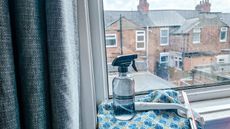 How to clean windows without streaks — 5 easy steps that cleaning pros always follow
How to clean windows without streaks — 5 easy steps that cleaning pros always followOur tried and tested guide that will leave nothing but streak-free shine
By Eve Smallman Last updated
-
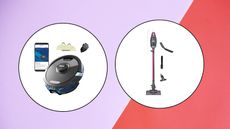 The latest Shark sale deals are perfect for pollen-proofing your home — with up to $150 off our favorite vacuums
The latest Shark sale deals are perfect for pollen-proofing your home — with up to $150 off our favorite vacuumsFrequent cleaning is a must when hay fever strikes. These Shark sale deals on vacuums have arrived just in time for allergy season
By Danielle Valente Published
-
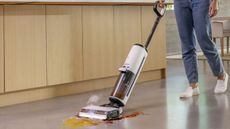 Tineco Floor One S7 steam wet-dry vacuum review — spotless floors with minimal effort
Tineco Floor One S7 steam wet-dry vacuum review — spotless floors with minimal effortExplore the multifunctional abilities of the Tineco Floor One S7 steam wet-dry vacuum
By Camryn Rabideau Published
-
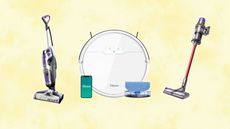 Amazon vacuum cleaners to nab during the retailer's Big Spring Sale — save up to 60% off our go-to small-space finds
Amazon vacuum cleaners to nab during the retailer's Big Spring Sale — save up to 60% off our go-to small-space findsChecking out the savings on Amazon? Vacuum cleaners are a must-buy in their Big Spring Sale
By Danielle Valente Published
-
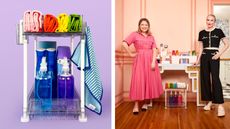 The Home Edit Walmart cleaning collection has just debuted with finds from $3
The Home Edit Walmart cleaning collection has just debuted with finds from $3Spring cleaning, anyone? The Home Edit Walmart cleaning collection will make the task organized and seamless
By Danielle Valente Published
-
 How to clean carpet on stairs — 3 simple steps to a spruced up staircase
How to clean carpet on stairs — 3 simple steps to a spruced up staircaseOnce you learn how to clean carpet on stairs, your front entryway will never look more impressive
By Andy van Terheyden Published
-
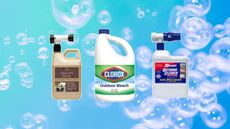 The Home Depot backyard and patio cleaning supplies we're stocking up on before spring
The Home Depot backyard and patio cleaning supplies we're stocking up on before springDon't forget the outdoors when spring cleaning — The Home Depot backyard cleaning buys from $11 will assist
By Danielle Valente Published
-
 The Shark Detect Pro vacuum and other models are on sale for St Patrick's Day — perfect picks for your spring clean
The Shark Detect Pro vacuum and other models are on sale for St Patrick's Day — perfect picks for your spring cleanWhether you're eyeing the Shark Detect Pro Vacuum or Shark Pet Cordless Stick Vacuum, shop the St. Patty's Day sale
By Danielle Valente Published
